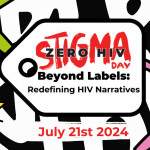We have just experienced—it was June 5 to be exact—a day of great significance to people living with HIV. It was HIV Long-Term Survivors Awareness Day.
The day clearly means a lot to the estimated one in four HIV-positive North Americans, like myself, who have been living with the virus for more than 25 years. It tends to emphasize common experiences and common needs. That’s wise. To attempt to capture the diversity of that particular population is a tall order and not the order of the day. In fact that population is far from homogeneous, even though somewhat united by the history of the epidemic. The awareness day illustrates we can all focus on a common issue important to us as a community.
That degree of unity is rare.
In practical terms, members of the HIV community have little in common. In 2019, for example, just over half of us in North America have undetectable viral loads, the remainder either unaware they are infected or still on the path to undetectable. Meanwhile some (many?) present as though their lives are as normal as those of their HIV-negative neighbors; only an antibody test and their medicine cabinets would reveal them as different.
True, some us of experience side effects—but some of us don’t. Some of us experience horrifying stigma, but some of us don’t. Some of us are traumatized by our diagnosis, but for some it’s business as usual. Some of us find that accessing treatment and care is a challenge, some of us encounter no problems. Some of us are intensely political, others wish we would just get on with life. Some wish living with HIV would be normalized, others are intensely opposed to that. For some, criminalization is a threat, others not. Then of course we harbor differences that arise from the colour of our skin, our gender and sexual orientation, our socio-economic background, our mental health, our housing, our experience (or not) with substance use—and many other issues. In short, a collective experience is hard to come by. Unity is hard to come by. Yet we strive for it constantly—and may need to do so more than ever.
That striving for unity is, of necessity, realized within a framework of diversity, arguably the hallmark of the global HIV community. The concept of a (sort of) unified community is thus realized rarely, if at all, unless for example we count those who are privileged to attend International AIDS Conferences. Even those events are characterized by multiple groups having multiple agendas. They emphasize that the search for common causes is not an impossible one (think Ending the Epidemic or even U=U), but ultimately we are a community of splinter groups. One could say we are not one community, but a collection of communities, of distinct epidemics each carrying the HIV umbrella.
Interestingly, the narrative from the 2020 International AIDS Conference, controversially slated for San Francisco, seems to indicate organizers too are struggling with the concept of unity vs. diversification of effort. “Now, we must come together and make common cause with other health issues,” they suggest. They stress the need for “resilience to avoid fragmentation in the response and to remain united and inclusive in order to meet our common challenges” (emphasis mine). (The subtext is that not enough people support San Francisco as a preferred conference location and will thus likely stay away - but that’s another story.)
Achieving unity is a balancing act, of course. Look around at your own nation’s response to HIV and it’s likely characterized by fragmentation. Some of that is a necessity, of course. Without local distribution of services and without recognizing the diverse needs of affected populations, the response to HIV would be weak indeed. But then there is the downside.
In Canada, we have a deeply fragmented response. There are over 100 AIDS Service Organizations and governments have sought ways to reduce the number they fund in what can seem quite arbitrary ways. Umbrella organizations like the Canadian AIDS Society and CAAN (the Canadian Aboriginal AIDS Network) have been victims of drastic funding cuts. The message is partly one that favours survival of the fittest. But it’s clear too that the government thinks the movement has become too fragmented, that the same effect can be achieved with the same money distributed differently. Meanwhile national organizations like the Canadian AIDS Society and the CPPN (the Canadian Positive People Network) have struggled to gain support for their efforts to adequately represent nation-wide constituencies. It seems that the community favours a fragmented response; governments are less keen.
That will make efforts like uniting with other health groups, hinted at by the International AIDS Society, difficult. If we constantly stress how different we people living with HIV are from each other, how can we join forces with other groups where the only common bond is a disability and the need for more money?
In Canada, for funding purposes, we have seen governments lump together HIV with Hepatitis C and other sexually transmitted blood-borne infections. I’ve never been a fan. The method of transmission seems a clumsy way of linking hugely different conditions. Nevertheless we have seen an HIV movement holding few cards roll over and accept it. Expect more of the same, but on a greater scale. The end of AIDS exceptionalism, from a funders’ viewpoint, is clearly in sight. And without a much more unified community there will likely be little that can be done.
As much, therefore, as the recent proclamations of the International AIDS Society make me uncomfortable, I think they have it mostly right with their call for unity. It applies on both a global, national and even local scale. We do need “to avoid fragmentation in the response and to remain united and inclusive in order to meet our common challenges.” The challenge of course, is in cultivating unity while honouring our differences and all that entails.
That’s why events like HIV Long-Term Survivors Awareness Day have an appeal. True, they focus on just some of us but they also speak to our common history and the events that brought all people living with HIV to where they are today. I think that finding common ground like this while respecting diversity pays off and is key to the survival of the movement.








1 Comment
1 Comment